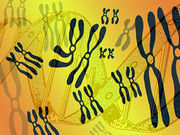Grafts of patients’ genetically modified skin improved healing of wounds in early study
TUESDAY, Nov. 1, 2016 (HealthDay News) — Gene therapy shows promise in treating recessive dystrophic epidermolysis bullosa, according to a study published in the Nov. 1 issue of the Journal of the American Medical Association.
In an early-stage clinical trial, researchers from the Stanford University School of Medicine tested the therapy on four adults with recessive dystrophic epidermolysis bullosa. Grafts of the patients’ own genetically corrected skin were applied to open wounds caused by the disease. The grafts improved wound healing and seemed to be well tolerated, the researchers reported.
“Our phase 1 trial shows the treatment appears safe, and we were fortunate to see some good clinical outcomes,” co-senior author Jean Tang, M.D., Ph.D., an associate professor of dermatology at Stanford, said in a university news release. “In some cases, wounds that had not healed for five years were successfully healed with the gene therapy. This is a huge improvement in the quality of life for these people.”
The next step is to assess the therapy in patients aged 13 and older. Being able to treat children may prevent the development of serious chronic wounds and scars, the researchers said. But additional trials will be needed before the procedure becomes an accepted practice.
Full Text (subscription or payment may be required)
Copyright © 2016 HealthDay. All rights reserved.








